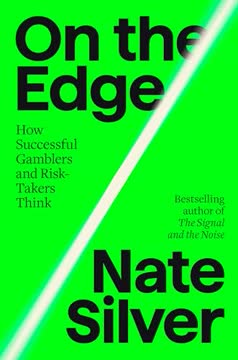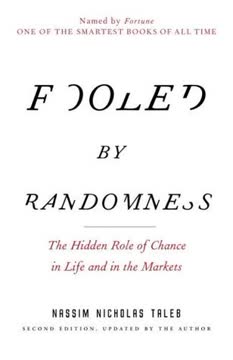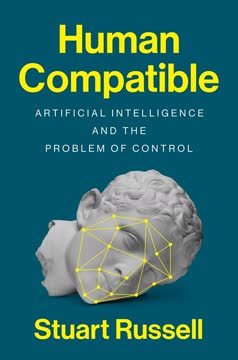Key Takeaways
1. Central banks saved the global economy but became overextended
"Central banks have been considered the only game in town."
Bold policy actions. In response to the 2008 financial crisis, central banks implemented unprecedented measures to stabilize the global economy. They slashed interest rates, injected massive liquidity, and engaged in large-scale asset purchases. These actions prevented a global depression and bought time for economies to heal.
Unintended consequences. However, central banks' prolonged use of unconventional policies has led to:
- Artificially inflated asset prices
- Increased wealth inequality
- Distorted market signals
- Reduced incentives for governments to implement structural reforms
As a result, central banks now face a dilemma: continuing their interventions risks creating further imbalances, while withdrawing support could trigger market instability and economic setbacks.
2. The world faces a critical "T-junction" with diverging economic paths
"The current road we are on is increasingly fragile and volatile, and it will soon end."
Bimodal distribution. The global economy is approaching a critical juncture, with two distinct potential outcomes:
- A positive scenario: High, inclusive growth and genuine financial stability
- A negative scenario: Lower growth, increased inequality, and financial instability
Factors influencing the outcome:
- Government policy responses
- Geopolitical developments
- Technological innovations
- Market dynamics
- Social and political trends
The path taken will have profound implications for current and future generations, affecting economic prosperity, social cohesion, and political stability.
3. Inequality, unemployment, and political dysfunction pose significant challenges
"Inequality has become a deeply entrenched problem whose adverse consequences can easily tip into a self-feeding, vicious cycle."
Multifaceted challenges. The global economy faces interconnected issues that reinforce each other:
- Income and wealth inequality
- Persistent unemployment, especially among youth
- Political gridlock and rise of populist movements
- Erosion of trust in institutions
Consequences:
- Reduced social mobility
- Weakened economic growth
- Increased political instability
- Threats to social cohesion
Addressing these challenges requires comprehensive policy responses that go beyond monetary interventions, including education reform, labor market policies, and measures to ensure more equitable distribution of economic gains.
4. Global policy coordination has weakened, threatening economic stability
"We may be marching toward a world in which global policy coordination is a mere shadow of its former self."
Fragmented response. The post-crisis era has seen a decline in international economic cooperation, with countries increasingly pursuing unilateral policies. This trend is evident in:
- Trade tensions and protectionist measures
- Divergent monetary policies among major central banks
- Lack of progress on global financial regulation
- Weakened multilateral institutions
Risks:
- Increased volatility in currency and financial markets
- Ineffective responses to global economic challenges
- Potential for economic conflicts and "beggar-thy-neighbor" policies
- Reduced ability to manage future crises
Rebuilding effective global coordination is crucial for addressing shared economic challenges and ensuring stable, sustainable growth.
5. Financial risks have migrated from banks to less regulated sectors
"Squeezing risk out of the economy can be like pressing down on a water bed: The risk often re-emerges elsewhere."
Risk migration. Post-crisis regulations have made banks safer, but financial risks have shifted to:
- Shadow banking sector
- Asset management firms
- Financial technology companies
- Cryptocurrency markets
Challenges:
- Reduced transparency and oversight
- Potential for regulatory arbitrage
- New forms of systemic risk
- Difficulty in assessing and managing interconnected risks
Regulators and policymakers must adapt to this evolving landscape to ensure financial stability without stifling innovation or economic growth.
6. Market liquidity is overestimated, raising the risk of instability
"Unlike other bond markets, U.S. Treasuries are viewed as being open for business for the entire global trading day….Any indications that the market can suddenly shut down with little warning raises troubling questions about how the nature of trading has changed in recent years."
Liquidity illusion. Many investors underestimate liquidity risk, assuming they can easily sell assets in times of stress. However, market structure changes have reduced liquidity provision:
- Reduced market-making capacity of banks
- Growth of high-frequency trading
- Increased use of passive investment strategies
Potential consequences:
- Sudden price gaps and market disruptions
- Amplified market volatility during stress periods
- Increased correlation among asset classes
- Difficulty in executing large trades without moving prices
Investors and policymakers need to reassess liquidity assumptions and prepare for potential market dislocations.
7. Disruptive innovations are reshaping industries and the global economy
"Advances in technology have always disreupted the status quo. But they have never done so across so many markets and at the speed and scale that is being seen today."
Transformative technologies. Innovations in areas such as artificial intelligence, blockchain, and renewable energy are fundamentally altering:
- Business models
- Labor markets
- Consumer behavior
- Economic structures
Implications:
- Increased productivity and economic growth potential
- Job displacement and skills mismatches
- Shifts in competitive advantages among countries and companies
- New challenges for regulators and policymakers
Adapting to and harnessing these disruptive forces will be crucial for economic success in the coming decades.
8. Cognitive diversity and overcoming biases are crucial for success
"Diversity can improve the bottom line. It may even matter as much as ability."
Enhanced decision-making. Cognitive diversity – the inclusion of people with different thinking styles, perspectives, and problem-solving approaches – leads to:
- Better problem identification and solution generation
- Reduced groupthink and blind spots
- Improved adaptability to changing environments
- Enhanced innovation and creativity
Overcoming biases:
- Recognize and address unconscious biases
- Create inclusive environments that value diverse viewpoints
- Implement structured decision-making processes
- Seek out and consider alternative perspectives
Organizations and societies that embrace cognitive diversity and work to overcome biases will be better positioned to navigate complex challenges and seize opportunities.
9. Scenario analysis helps navigate uncertainty and prepare for crises
"A premortem in a business setting comes at the beginning of a project rather than the end, so that the project can be improved rather than autopsied."
Strategic foresight. Scenario analysis involves:
- Identifying potential future outcomes, including unlikely events
- Assessing impacts and developing response strategies
- Challenging assumptions and mental models
- Improving organizational agility and resilience
Benefits:
- Better preparedness for various contingencies
- Identification of potential risks and opportunities
- Enhanced decision-making under uncertainty
- Improved ability to respond quickly to changing circumstances
Regular use of scenario analysis can help organizations and policymakers anticipate and navigate complex, rapidly changing environments.
10. Optionality, resilience, and agility are key to thriving in uncertain times
"Success is not final, failure is not fatal: it is the courage to continue that counts."
Adaptive strategies. To navigate the uncertain global economic landscape, individuals, organizations, and governments should focus on developing:
-
Optionality:
- Maintain flexibility in decision-making
- Diversify investments and strategies
- Cultivate multiple skills and revenue streams
-
Resilience:
- Build financial and operational buffers
- Develop robust risk management systems
- Foster a culture of continuous learning and adaptation
-
Agility:
- Embrace rapid experimentation and iteration
- Develop responsive organizational structures
- Cultivate a mindset of constant improvement and innovation
By combining these attributes, stakeholders can better position themselves to withstand shocks, seize opportunities, and thrive in an increasingly complex and unpredictable global economy.
Last updated:
FAQ
What's The Only Game in Town about?
- Central Banks' Role: The book explores the critical role of central banks in the global economy, especially post-2008 financial crisis, highlighting their shift from regulators to active market players.
- Economic Challenges: El-Erian identifies major global economic challenges, such as low growth, rising inequality, and political dysfunction, exacerbated by over-reliance on central banks.
- Future Implications: It discusses potential future scenarios, emphasizing the need for coordinated policy efforts among governments and central banks to prevent further crises.
Why should I read The Only Game in Town?
- Insightful Analysis: Mohamed El-Erian offers a comprehensive analysis of the global economic landscape, making complex financial issues accessible to a broad audience.
- Practical Recommendations: The book provides actionable frameworks for policymakers, businesses, and individuals to navigate economic uncertainties.
- Expert Perspective: El-Erian's extensive experience in both public and private sectors enriches the discussion on central banking and economic policy.
What are the key takeaways of The Only Game in Town?
- Central Banks' Limitations: While central banks stabilize economies, their ability to sustain growth is limited, and over-reliance can lead to instability.
- Comprehensive Policies Needed: Integrating fiscal policies and structural reforms with monetary measures is crucial for sustainable growth.
- Navigating Uncertainty: El-Erian offers frameworks for understanding and managing economic complexities, encouraging open mindsets and cognitive diversity.
What are the best quotes from The Only Game in Town and what do they mean?
- “What is needed is not more finance, but better finance.”: Emphasizes quality over quantity in financial systems, advocating for productive and sustainable financial outcomes.
- “The world has largely exhausted the scope for central bank improvisation as a growth strategy.”: Highlights the limitations of relying solely on central banks for economic growth.
- “Sometimes it is the people who no one imagines anything of who do the things that no one can imagine.”: Encourages recognizing diverse perspectives in driving economic change.
How does El-Erian define the "new normal" in The Only Game in Town?
- Post-Crisis Reality: The "new normal" describes the prolonged period of low growth and high unemployment post-2008 crisis, setting a baseline for economic expectations.
- Structural Changes: Reflects significant changes like rising inequality and political dysfunction, requiring reevaluation of traditional policies.
- Policy Implications: Understanding the "new normal" is crucial for policymakers to navigate current economic complexities and stimulate growth.
What are the ten big challenges El-Erian identifies in The Only Game in Town?
- Inadequate Economic Growth: Low growth rates hinder job creation and investment, requiring comprehensive reform.
- High Unemployment Rates: Persistent unemployment, especially among youth, threatens social cohesion and stability.
- Rising Inequality: Growing income and wealth disparity undermines opportunities and necessitates inclusive growth strategies.
How do central banks impact the global economy according to El-Erian?
- Primary Policymakers: Central banks play a central role in managing economic stability, influencing interest rates, inflation, and growth.
- Market Expectations: Their communication and policy decisions shape market expectations, affecting financial markets positively and negatively.
- Limitations: Central banks provide short-term relief but cannot solve structural problems alone, needing coordinated fiscal and structural reforms.
What does El-Erian suggest about the future of central banking?
- Need for Evolution: Central banks must adapt strategies to address changing economic landscapes and recognize growth limitations.
- Collaboration with Governments: Emphasizes collaboration between central banks and governments for comprehensive economic policies.
- Navigating Uncertainty: Provides frameworks for managing uncertainties, encouraging flexibility and responsiveness in policymaking.
How does El-Erian view the relationship between finance and the real economy?
- Interconnectedness: Financial stability is essential for promoting economic growth and job creation.
- Risks of Financialization: Excessive financialization prioritizes short-term gains, leading to resource misallocations and volatility.
- Need for Better Finance: Advocates for a financial system supporting productive investment and sustainable growth.
What role do policymakers play in shaping economic outcomes according to El-Erian?
- Collective Responsibility: Policymakers, businesses, and individuals share responsibility for shaping economic outcomes through coordinated efforts.
- Importance of Engagement: Active engagement with central banks and the private sector is crucial for effective solutions.
- Long-Term Vision: Encourages a long-term perspective in policy design to address underlying global economic issues.
What is the significance of the "bimodal distribution" concept in The Only Game in Town?
- Understanding Uncertainty: Illustrates dual potential outcomes—positive and negative—in the current economic environment.
- Strategic Planning: Encourages preparation for both scenarios, emphasizing resilience and adaptability.
- Risk Management: Recognizing bimodal outcomes helps manage risks and capitalize on opportunities in a volatile landscape.
What are the implications of central banks being the "only game in town"?
- Risk of Ineffectiveness: Sole reliance on central banks may lead to financial instability and economic stagnation.
- Need for Diverse Approaches: A diverse set of policy tools is necessary to address complex challenges effectively.
- Long-Term Consequences: Central banks' actions may lead to asset bubbles and resource misallocations, highlighting the need for balanced governance.
Review Summary
The Only Game in Town received mixed reviews. Readers appreciated El-Erian's insights into central banking and the global economy, but some found the writing style verbose and difficult to follow. The book's analysis of post-2008 financial crisis policies and their limitations was praised, though some felt it lacked concrete solutions. Critics noted that parts of the book, particularly on diversity, seemed out of place. Overall, readers valued El-Erian's expertise but had varying opinions on the book's effectiveness in conveying complex economic concepts.
Similar Books










Download PDF
Download EPUB
.epub digital book format is ideal for reading ebooks on phones, tablets, and e-readers.





